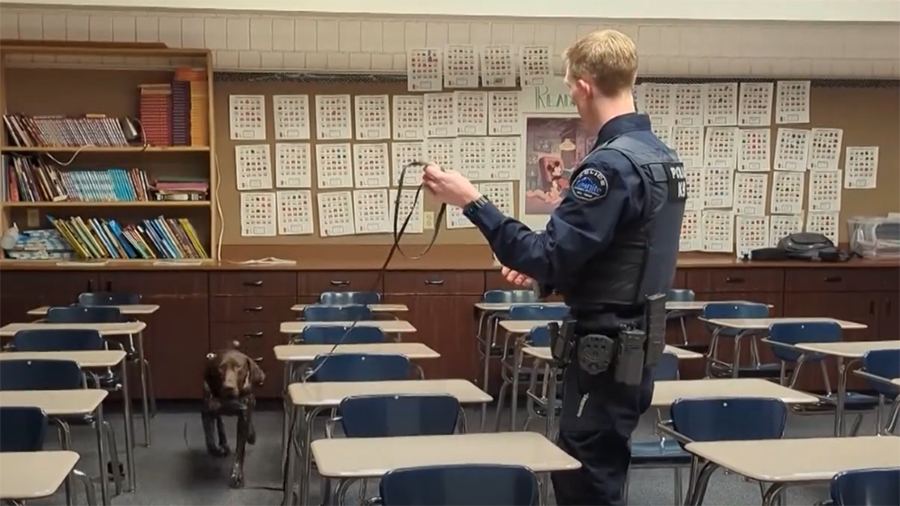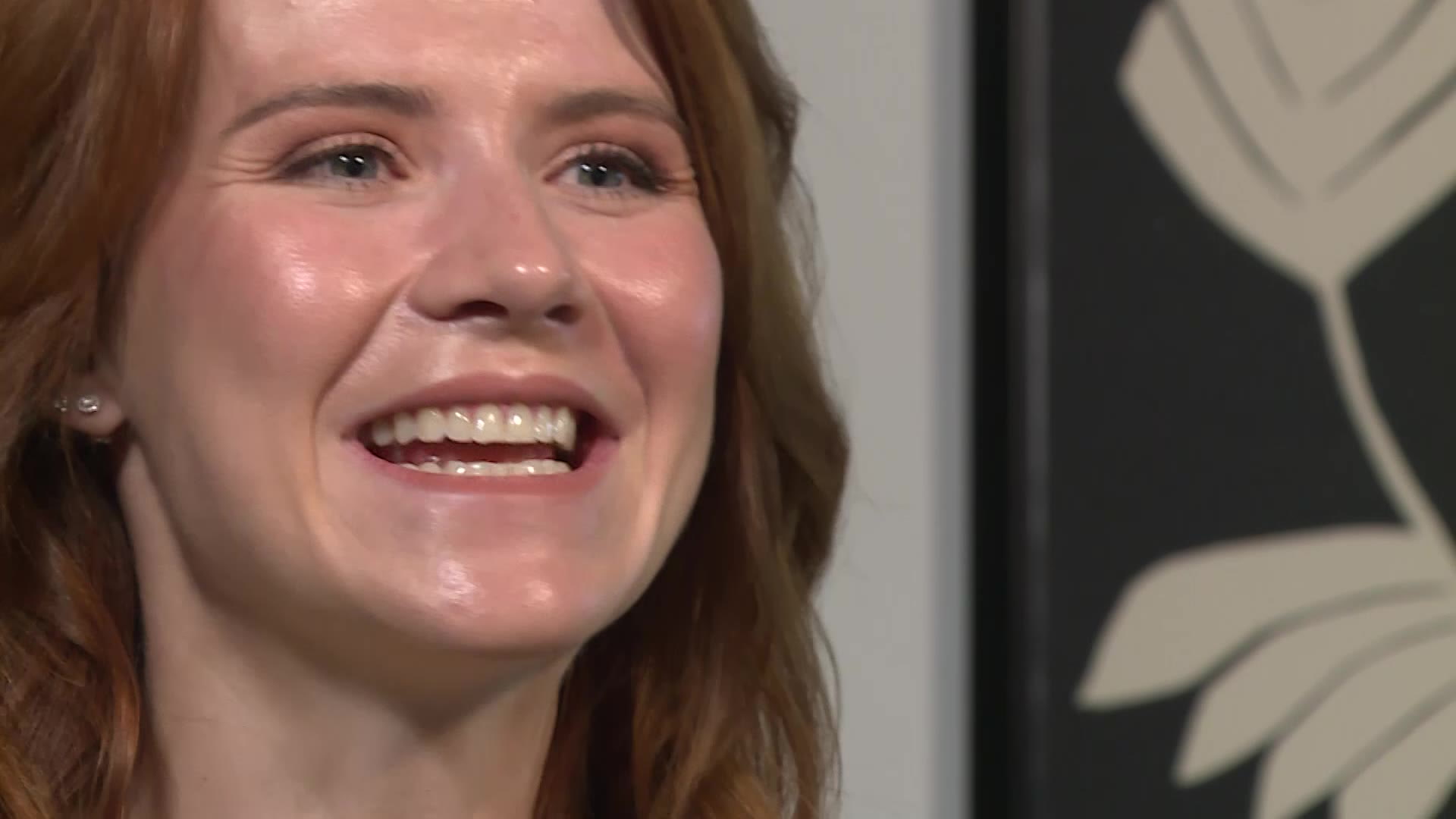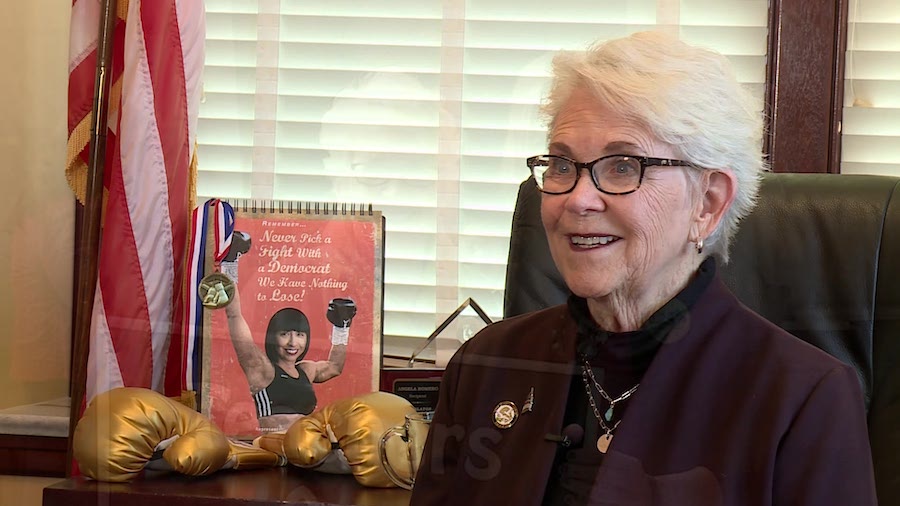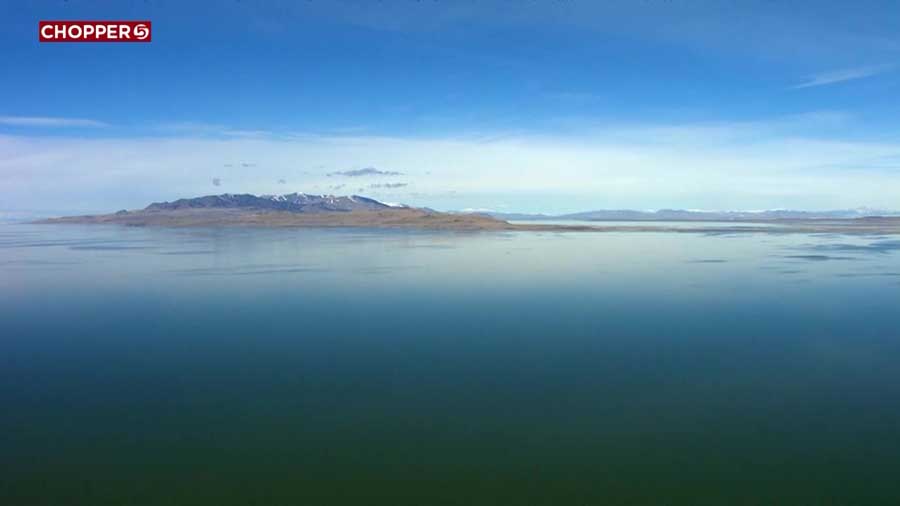KSL+: Experts Say Anti-Asian Rhetoric Existed Before COVID-19
May 13, 2021, 7:00 PM | Updated: Jun 3, 2021, 3:59 pm
SALT LAKE CITY, Utah – May is Asian American Pacific Islander Heritage Month. We see the Asian influence all around us—from music to food to Oscar nominated movies. At the same time — anti-Asian rhetoric has peaked. For many of us–higher than we’ve seen our lifetimes and jumping to the forefront of our national conversations.
“These were all stories that were thankfully long ago, being told to go back to China, I’ve been followed around Temple Square before being told to go back to Cambodia, I’m neither Chinese nor Cambodian,” Carrie Shin Pace told us. “I’ve been spit on before in the past I’ve had drinks poured over me.”
You’ve probably heard over the last year about the rise in attacks on Asians in the U-S, especially older ones. Pace and a partner started the “Asian Link Project.” It pairs up members of the Asian American community who might be afraid to go out alone…with chaperones.
For people who are not Asian, this may feel like a sudden rise in Anti-Asian rhetoric brought on by COVID-19. But there’s a history here. And to better understand what’s happening now — we’re taking a look at the past.]
We spoke with Annie Isabel Fukushima, a professor in the ethnic studies department at the University of Utah. We asked her about the history that has been building for generations around Asians and Asian Americans and how we all live together.
Editor’s note: interviews edited lightly for clarity and readability.
Annie Isabel Fukushima: “There is really a perception of Asians as a threat. And this goes back to language and images around yellow peril discourse. It means that Asians are perceived as a threat. It doesn’t mean that they necessarily are but there is a perception of them as a threat. And this goes back to the 1882 Chinese Exclusion Acts, and the discourse and the images and the words that emerge to make such laws go into existence or to pass. And so what we saw was that the emergence of images of how, for example, Chinese men were a threat to white woman. There were also images around Chinatown’s as a threat to communities. And so you started to see all these images, in media in the newspapers, but also in the everyday where people were perceiving, in particular Chinese people as a threat, which would then eventually lead to the Chinese Exclusion Act, which was the first Comprehensive Immigration Act to exclude an entire group from entry into the United States. After the Chinese Exclusion Act, what the United States would see was a slew of anti-immigrant policies that would definitely show a prioritizing of migration from Europe, and then a deprioritizing or exclusions from places such as Asia and Latin America.
There’s also the perception of countries like China as an economic threat to US capitalism and global capitalism. And so these sort of old narratives of yellow peril discourse actually are reemerging, even in the contemporary moment. And so, this has been the backdrop of our 21st century. And that what we’re seeing, though, is that during COVID-19, and global pandemic, is that now you have this perception of disease as coming from a country. And so people now acting out violently against particular bodies, seeing them as a physical threat to their communities, even though we know that when we talk about community spread, anyone can be a spreader, right? It’s not just contained to particular bodies.
We’re consuming all kinds of things from Thai to Vietnamese to Chinese, you name it, right? And so the question becomes, how do we not do it and just this kind of superficial consumptive way but really deeply engaged with different cultures in ways that are meaningful? And also the histories. Do you know the history of these different groups that came to the United States? And do we understand that, you know, those genealogies of why they’re in a place like Utah? What brought our Vietnamese are Cambodian, our South Korean or Korean? Or, as well as our Japanese or Chinese. The list goes on, there are so many Asian communities living in Utah, some for multi generations. And so what is that history that led those Asian groups to come to Utah to a place like Utah and want to call it home? And so how do we engage with our communities beyond consumption and actually understand the histories that shaped us and them together?”
Utah has had its own role in the idea of Asians as a threat. We went out to Delta to visit the Topaz Museum–not far from the internment camp where 11-thousand people, mostly U-S citizens were housed during World War II. More than 120-thousand men, women and children were removed from their homes along the West Coast in WWII and taken to 10 different camps across the country–many forced to live in horse stables until camps were completed. They were not given time to sell their homes and businesses, essentially abandoning them and losing any capitol and security they built.
Jane Beckwith was born and raised in Delta and is the President of the Topaz Museum Board. She walked us through the history and what we can take away to make things better today.
Jane Beckwith: “I grew up in Delta. And my father ran the newspaper, and he hired a man from Topaz to work in his newspaper office.
People made this mistaken notion saying, Look what they did to Pearl Harbor, when the Japanese people living in the United States had nothing to do with Pearl Harbor. But that lie and that accusation kind of stuck. And so people started punishing Japanese Americans for what Japan had done to Pearl Harbor. So that history is just, it’s just large. And so because it was during war time, it was very hard to be rational.
If you are of Japanese ancestry, you had to go into temporary holding places that they call the assembly centers. And then while those were occupied, they started building 10 other camps. And the Department of Justice had camps for men. They picked up the leaders of the Japanese communities right after Pearl Harbor. So the Japanese people were bereft of their leaders. And so you know, it’s just it’s very complicated and very rushed and not really thought through. So there were 10 camps. Topaz was one of those 10 camps. It held about 11,000 people over the course of the three years that the camp is open. People could leave the camp and go east. They just couldn’t go back to California and there was even a movement that said, now that we’ve got all the Japanese out, we’re going to prevent them from I’m coming back in. That’s how really mean and how determined those people were to continue to punish Japanese.
If you look at Native Americans, and you look at African Americans, I mean, we don’t have a very good track record for being kind to people that are different nationalities. But yeah, but this one was here in my backyard. This is where I grew up. And so it resonated a lot. And the site is very interesting. We own the Topaz museum, 640 acres of that site. And we take people out there all the time, but we ask people to protect and be kind to the place. It’s a National Historic Landmark now.”
The last Japanese internment camp closed in March 1946. In 1988, Congress issued a formal apology and passed the Civil Liberties Act awarding $20,000 each to over 80,000 Japanese Americans who were still alive as reparations for their treatment.
Some may argue today that those views are a thing of the past. We tend to lump all Asians together and point to high achieving groups as evidence of Asians as a “model minority”. But as Annie Isabel Fukushima points out, the past treatment of Asians in our society has shaped the way families have assimilated into U-S culture.
Annie Isabel Fukushima: “I think about how Asian migrant communities and Asian diasporas who have been living in the United States for multi generations, I think that many of them have learned to survive by either assimilating in a particular way, which means participating in US culture, at the expense of their own cultures and hiding them, as well as participating in ways that might look like they are quiet. Because if you are too visible than in the US if you’re a person of color, or a person who is seen as too different than you’re perceived of as dangerous. And so I do think that there is a stereotype of Asian migrants and Asian diasporas in the multi generation Asians in the US as being a seen as quiet, as being seen as submissive, as even being seen as “model minorities”. And all of these images perpetuate a particular kind of image of who is a “good” Asian and who is a “bad” one. And so when you are model minority, I still believe that kind of image perpetuates around the yellow peril discourse, because oftentimes, a model minority is seen as competitive, is seen as somebody who is really good at math. Those are all those kinds of stereotypes that come out about how Asians are more successful in comparison to other groups. But the truth is, is that Asian group as a group is such a wide category, and many don’t realize that there’s actually disparities within the community. And so what we know is that there are many Asian communities who actually are experiencing hunger, who actually are experiencing economic destitution, although they may not take advantage of the social and welfare resources available to them, and that they’re experiencing undocumented status, even though we might perceive of the undocumented migrant as specifically Latinx. We know that’s not true. There are undocumented migrants from Europe, from Canada, from Asia, from all over the world in the US. But there is a particular image around that as well. And so when I think about this kind of perception of Asians in the US and our relationships to them, and how people may, on the one hand, hold them at a distance and not bring them close. It has a lot to do with the stereotypes that we have developed about Asian communities in the US.
The model minority myth–and I say myth, because it is not true for all, although some may participate in it–the model minority image for Asian communities emerged around the 1980s. In particular, when we started seeing images like Time Magazine, putting forth images of Asian communities as, quote, whiz kids. And so we started to see this image of the Asian as really good at technology, good at math, good at sciences, emerging in the 1980s, that put forth a particular picture of them as a good kind of model, Asian group or model group. And so the perception of the model minority is that the assumption is, is that this group is successful, because they participate in US capitalist economies, they participate in our educational system, and they are doing well. But the truth is, is that it is a myth for many Asian communities, because we know that there is a difference between the haves and the have nots, and that Asian communities experience a huge wealth gaps within the category itself. And that actually, what we know is that because of the image of Asian communities as a model minority, that there might be a perception that they there’s a lot of pressure for them to do well. And so we know that things such as suicide ideation and suicidality, are actually huge problems in Asian communities. But the difference is that there’s a lot of silences around it, and they may not access resources because of their the stigma of mental health in Asian communities. And so there’s a complexity to being called a model minority. It assumes that you are doing well, that you are successful in comparison to other minoritized groups in the United States. But the truth is, racial experiences are so much more complex than that, than saying that one is either really good at something or not.”
Here in Utah, there really hasn’t been the overt violence like we’ve seen in other cities and states. But Annie says we’re not immune to mistreatment.
Annie Isabel Fukushima: “One of the things that I know, being somebody who lives in Utah, and connects with other Asian diasporas in a Utahn context, is that I’ve known and have heard in the past year, there are folks who are deeply scared to live in Utah, which is one of the places that for many, we see as a nice place to live. And for me, that was really sad to hear that some of my friends who are residing here feel that they are in danger, when they are living in their own neighborhoods. Some of them have even experienced people telling them to go home, yelling at them in the streets, and experiencing other kinds of hostilities, just because they are part of the Asian diaspora residing in Utah and living here and calling it home. I think that there is this perception, when we think about the violence and the anti-Asian hate that’s happening, and the racism that’s happening, as only happening in big cities. We’re looking and turning towards Los Angeles, San Francisco, New York and seeing it in our media, and those get the most coverage. And they’re the most visible, but the hostilities are happening here in Utah as well. And it might just look a little bit different, it might look a little bit more polite. And in some cases, it may even be overt. And we just don’t have the language in our community to talk about what’s happening, because we oftentimes don’t. And so I know what’s happening here in Utah, the hostilities are happening here. I also know that people are feeling afraid, in their own communities in their own skin.
Oh, there’s so many that happen here in Utah that people don’t even realize are part of the microaggressions that they’re doing. Asking the question, “Where are you from?” is a microaggression because it assumes foreignness. Saying that a person’s English is so good, assumes that they don’t have the capacity and the aptitude to be multilingual, which, actually, I hear Utahns are pretty multilingual. And so I just I think that’s another one that’s super common that people don’t even realize is a microaggression, that actually perpetuates that you are not from here. And that can also make a person feel like they don’t belong.
When somebody says something racist about Asians, and then they turn to their friend, and they say, but “I don’t mean you! I mean, those other Asians”. I think that can be really hurtful, because actually, even if you don’t see them as that, what you’re saying is that you don’t see them. And so those are also part of the actions and statements that people might oftentimes enact, that are racist. And so there’s a range of ways that happens. There’s also the one that has happened to a lot of the women of color that I know in my life that work in a range of fields in which they are told that they are not people of color. And people see that as a compliment. Because it’s saying you’re closer to whiteness. But the truth is, is when I actually navigate the world, I cannot turn off the fact that when people look at me, they see anything but white. And so that becomes one of the things where it’s like, then you don’t see my culture, you don’t see that my culture, which I’m a Korean Mexican–my culture is very complex. And so that’s where I think that there’s a lot of things that one can say and do in the everyday that they don’t even notice that they’re doing that can actually be really harmful to that person. And it is not necessarily about the single incidents, it’s actually about the repetition of incidents that constantly reinforce for the person that you don’t belong, that you’re not from here and that you’re something different.
I love when people want to get to know more about my history. And I think that instead of asking a person where you’re from, you might ask them, where do you call home? Or you might actually ask them about their families, recognizing that some people have very difficult relationships with their families. And so not everyone wants to talk about their families, we know that the complexities of whether it’s homophobia or other kinds of expectations. Not everyone comes from the stereotype of a family that we see in Utah. And so I do think, though, that there is something to getting to know people and their histories, about their connections, and asking them about what are the things that sustain them, feed them, make them feel like they’re full person? I think there are questions we can ask that aren’t “where are you from? What are you? And why is your English so good?”
I think there’s also intention so if you if you can grapple with. Why do you want to know this? What will help you deeply connect with them on another level? If you really are genuinely [asking], not in a snapshot of like, we’re just passing by, I barely know you and it just will make me more comfortable to know whether you’re from here or not. But I do think that there is something if you are really genuinely wanting to get to know somebody, then yeah, inviting them to share connections with what they call home or, and all of that is really interesting. But if you are just in a grocery store, they’re your Uber or Lyft driver, or they are the passenger…Are you asking the kinds of questions that are just trying to help you understand what race they are? Or do you genuinely just want to have a typical, nonchalant conversation? Would you ask anyone else that was not in an Asian body, a euro American body the same kinds of questions? And if you are, then what is what are you trying to figure out…what are the things that they’re trying to unpack, which then gets at the uncomfortability of they’re like, I just want to racially figure you out.
You know, how we treat each other is one thing in the everyday. And you’re right. I think that that’s just one aspect of it. But there are structural and systemic decisions that we are also making that impact so many more people. We have to also tackle those things and rethink how resources are distributed, and also how communities are impacted and who is not accessing resources. What we know is that it is the working poor, it is racial communities who are more likely to experience particular kinds of inequality economically as well. It is migrant communities who are oftentimes denied access to resources. And so it is a lot of people who live on the margins. And actually, what we’re seeing increasingly is that many of our communities are living on the margins, as the gap between the haves and have nots widens, and has been drastically widening, since the 1950s, we have just not been paying attention to it.
If we don’t start talking about it, then we actually can’t start making decisions, because then it continues to be in the realm of invisible, and something we don’t even think about. So I do think that in the context of Utah, it is so needed to have more conversations that move us into the uncomfortable. I think part of our lovely community is that there is a politeness and that there is a niceness that pervades our life. But what we then don’t have is the conversations about things that make us uncomfortable, that are difficult, because it’s just seen as rude, and it’s not part of our everyday.”
As Jane and the Topaz museum board works to reopen the museum after COVID, Jane hopes the message of the past can help guide our future.
Matt Rascon: “I’m looking at these words behind you. Race, prejudice, war, hysteria, failure, political leadership. What do you feel? Did we did we learn our lesson?”
Jane Beckwith: “I don’t think so. I think that we can fall into that prejudicial abyss very, very easily. These three things are incredibly important. But the one that is kind of missing there is that there was also a failure of people to stand up for people who were being misused. And I think that intercession could have prevented this because that’s what happened in Hawaii. 40% of them population in Hawaii was of Japanese ancestry. That was about 157,000 people. But instead, they only took about 2,000 people out of the Hawaiian Islands and put them in camps. And that’s because they interviewed them. They talked with them. They asked them who they wanted to have win the war. And that never happened on the mainland. It was just, if you are of Japanese ancestry, you’re going to have to leave. But you know, there were people in Salt Lake, lots of Japanese living in the Salt Lake area. There were even Japanese Americans living in Delta when the camp came. And they didn’t have to go to a camp. So that shows you again, the extreme anger and prejudice that the people were feeling in California.”
Matt Rascon: “When you take people through this museum, what do you hope they walk away with?”
Jane Beckwith: “Well, I hope they have a knowledge of what happened. And I hope that they their heart has been touched to say that what’s wrong. We emphasize the idea that kindness could have prevailed. None of these people were they were accused of crimes, but none of them were ever arrested for any kind of sabotage. So we just want other we want people to be kinder to each other.”













